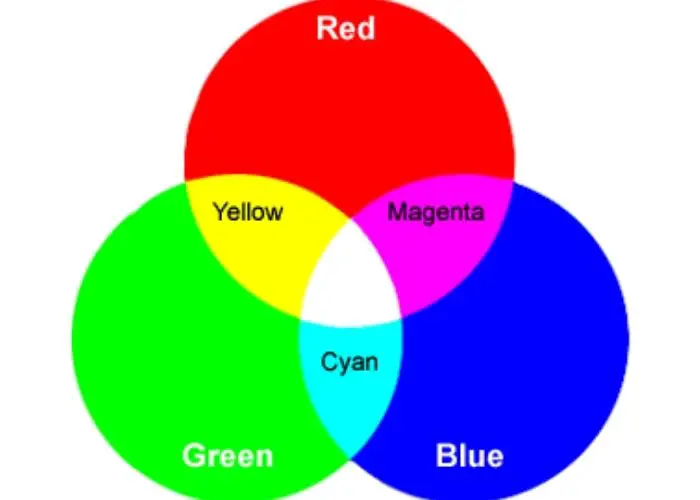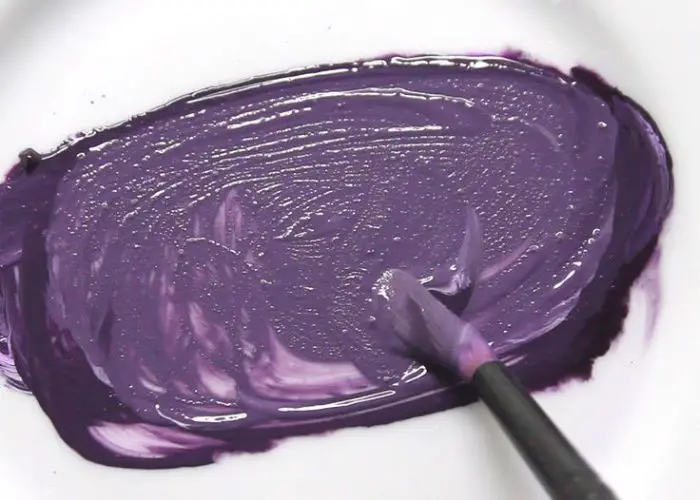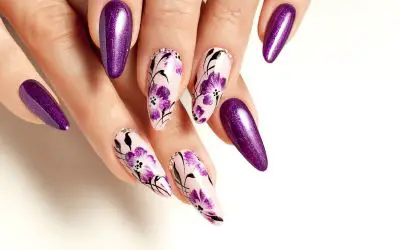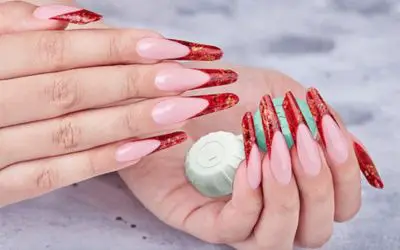If you’ve been rocking acrylics but are now ready for a change or want to give your natural nails some breathing room, I’ve got you covered.
No need to worry about harsh chemicals or expensive salon visits. Grab a few household items and get ready to immerse yourself in the magical world of vinegar.
In this blog post, I’ll unveil the step-by-step process to safely and successfully take off your acrylic nails using vinegar.
So, say goodbye to the days of expensive salon visits and chemical-laden removers, because I am about to unleash the magic of this household ingredient.
Get ready to say hello to a fresh new look, gorgeous natural nails, and a little bit of DIY pampering.
How to Take Off Acrylic Nails With Vinegar
- Trim down your acrylic nails using nail clippers
- File the nails
- Mix the vinegar with warm water
- Soak your nails in vinegar for 20-30 minutes
- Use a cuticle pusher to remove the acrylic nails
- File off any visible nail glue
- Wash your hands and apply a moisturizing cream.
How Long Do Acrylic Nails Last Before You Need To Remove Them?
The longevity of acrylic nails can vary depending on various factors. Some of these factors include nail growth rate, personal habits, and the quality of the application.
Generally, acrylic nails can last anywhere from 2 to 3 weeks before needing to be removed or filled in.
During this time, you may notice that your natural nails are growing out, causing a gap between the acrylic and your cuticles.
As weeks go by, acrylic nails may become more prone to lifting, cracking, or breaking. This is especially true if you expose them to excessive water, harsh chemicals, or physical stress.
So always monitor the condition of your acrylic nails. If you notice any significant damage, lifting, or discomfort, have them removed or repaired by a professional nail technician.
Attempting to remove or repair them yourself can damage your natural nails.
The decision to remove acrylic nails depends on your personal preference and the condition of the ripped-off acrylic nails.
Is It Better To Remove Old Acrylic Nails Or Get Them Filled?
Whether it’s better to remove old acrylic nails or get them filled depends on a few factors. Here are some considerations to help you make a decision:
Nail health. If your natural nails are weak, damaged, or in poor condition, it may be better to remove the old acrylic nails. Removing the acrylics allows you to assess the health of your nails and provide them with proper care and nourishment.
Nail growth. If there is a noticeable gap between the cuticles and the acrylic nails due to natural nail growth, it might be time for an infill. In this case, filling in the gap with new acrylic material can help maintain the appearance of your nails.
Read more: What is an acrylic fill?
Lifting and damage. If the acrylic nails are lifting, cracked, or damaged, you just have to remove them rather than trying to repair them. Damaged or lifted acrylics can trap moisture and bacteria, leading to nail infections or further damage.
Desired look. If you’re looking for a change in nail shape, length, or design, it might be a good opportunity to remove the old acrylic nails. Removing them allows you to explore different nail styles and gives you a chance to try something new.
Time and budget. Getting acrylic nails infilled is a quicker and more cost-effective option compared to the complete removal and application of a new set. If your schedule or budget is tight, opting for an infill can be a convenient choice.
How to Use Vinegar to Remove Acrylic Nails
Acrylic nails enhance the beauty of your hands, but there comes a time when you need to remove them. While there are various methods available, soaking your nails in vinegar is a popular and effective technique.
Here are two methods of removing acrylic nails using vinegar.
Method 1: Soaking in vinegar
Supplies you will need:
- Distilled white vinegar or apple cider vinegar
- Bowl or container large enough to soak your nails
- Cotton balls
- Nail file or buffer
- Cuticle oil or moisturizer
Steps to remove acrylic nails by soaking vinegar
Step 1: Trim and file your nails
Before you begin the removal process, trim down your excess acrylic nails as much as possible using nail clippers. Now here comes the question, “Can I cut acrylic nails?”
Yes, you can. But be careful not to cut too close to your natural nails.
Next, use a coarse nail file to file the surface of the acrylic nails. This step helps the vinegar penetrate the acrylic more effectively.
Step 2: Soak your nails in vinegar
Prepare a bowl or container large enough to soak your nails. Fill it with white vinegar, ensuring your nails are completely submerged.
Vinegar acts as a natural solvent that softens the acrylic, making it easier to remove. Soak your nails for approximately 20-30 minutes.
You can also add warm water to the vinegar to enhance its effectiveness.
Step 3: Check the progress
After the soaking time, remove one finger from the vinegar solution and check the progress. The acrylic should appear softer and start to lift from the natural nail bed.
If it doesn’t, continue soaking for a few more minutes until you achieve the desired effect.
Step 4: Gently remove the acrylic nails
Once the acrylic nails have softened, use a cuticle pusher or a wooden stick to push the loosened acrylic off your natural nails.
Be careful not to force or pry the acrylic, as this can damage your natural nails. If you encounter any resistance, repeat the soaking process for a little longer until the acrylic becomes more pliable.
Step 5: Repeat the soaking if needed
If there are traces of acrylic left on your nails after the initial removal, repeat the soaking process. This additional soaking will further loosen any remaining acrylic.
Patience is key during this step.
Step 6: Clean and moisturize
Once you have successfully removed all the acrylic nails, wash your hands with mild soap and water to remove any residual vinegar smell.
Dry your hands well and apply moisturizing hand cream or cuticle oil to nourish and hydrate your nails and cuticles.
Method 2: Using aluminum vinegar wraps
What you’ll need:
- Acetone or nail polish
- Distilled white vinegar
- Aluminum foil or cotton balls
- Nail buffer
- Nail clippers
Steps to remove acrylic nails using vinegar wraps
Step 1: Prepare the aluminum vinegar wrap
Start by cutting small pieces of aluminum foil that are large enough to wrap around each of your nails. Next, pour some white vinegar into a small bowl or container.
Dip each piece of aluminum foil into the bowl of vinegar, ensuring that the foil is saturated but not dripping excessively.
Step 2: Apply an aluminum vinegar wrap
Place the soaked aluminum foil wraps over your acrylic nails. Make sure the foil completely covers each nail.
Let the shiny side of the foil face outward and the vinegar-soaked part touches the acrylic surface.
Step 3: Allow the wraps to sit
Let the vinegar wraps sit on your nails for approximately 15-20 minutes. During this time, the vinegar will work to loosen the adhesive bond between the acrylic nails and your natural nails.
Step 4: Remove the wraps
After the designated time has passed, remove the aluminum vinegar wraps from your nails one at a time. Use gentle movements to avoid causing any discomfort or damage to your nails.
Step 5: Gently remove the acrylic nails
Using a wooden orange stick or a metal cuticle pusher to push the softened acrylic nails away from your natural nails. Start from the base of the nail and work your way toward the tip.
Be patient and avoid using excessive force, as this can harm your natural nails.
Step 6: Repeat the soaking if necessary
If you encounter difficulty removing the acrylic nails, repeat the soaking process by reapplying the vinegar wraps and letting them sit for another 5-10 minutes.
This should further loosen the adhesive, making it easier to remove the remaining acrylic.
Step 7: Clean and moisturize
Once you have removed the acrylic nails, wash your hands with mild soap and warm water. Gently scrub your nails using a soft brush to remove any residual adhesive.
Afterward, apply a nourishing cuticle oil or moisturizer to replenish moisture and promote nail health.
Interesting read: How old do you have to be to get acrylic nails?
Why Is Vinegar Effective In Removing Acrylic Nails?
Vinegar is effective in removing acrylic nails due to its acidic properties and ability to break down the adhesive bond between acrylic and natural nails.
Here are a few reasons why vinegar works well for this purpose:
Acidic nature. Vinegar, particularly white vinegar, is mildly acidic. Acids weaken and dissolve the adhesive used to bond the acrylic nails to the natural nails. The acid in vinegar helps to break down the glue, making it easier to remove the acrylic nails.
Solvent properties. Vinegar acts as a solvent, meaning it has the ability to dissolve substances. When soaked in vinegar, the adhesive used to attach the acrylic nails begins to soften and weaken, allowing for easier removal.
Accessibility. Because vinegar is readily available in most households, it is a convenient option for removing acrylic nails without the need for specialized products or harsh chemicals. It’s also a gentle and natural solution compared to some other nail removal methods.
What Should You Do If You Use Vinegar And It Isn’t Working To Remove Your Acrylic Nails?
If you have used vinegar to remove your acrylic nails and it isn’t working, there are a few steps you can take:
Soak for a longer duration. If the vinegar soak isn’t enough, you can try extending the soaking time. Reapply the vinegar-soaked wraps to your nails and allow them to sit for an extra 10-15 minutes.
Gently scrape or file the surface. After the extended soaking, you can use a cuticle stick or a gentle nail file to scrape or file the surface of the acrylic nails. This process can help to break down the remaining adhesive and create weak points that aid in their removal.
Seek professional assistance. If the vinegar method still proves ineffective, it may be best to seek professional help from a nail technician or a nail salon.
Avoid using force or harsh methods. Refrain from using excessive force or resorting to harsh methods such as pulling or tearing the acrylic nails off. This can lead to damage, pain, or even injury to your natural nails.
Other Ways of Removing Acrylic Nails
Here are a few more alternative methods for removing fake nails:
Using acetone soak
To remove acrylic nails using the acetone soak method, begin by trimming and filing your nails to reduce their length. Then, fill a bowl or container with acetone nail polish remover.
Immerse your nails in the acetone and let them soak for approximately 15-20 minutes. After the soaking period, check the progress by scraping off the softened acrylic using a cuticle pusher or a wooden stick.
If there are still remnants of acrylic left, repeat the soaking process and continue scraping until all the acrylic is removed.
Using dental floss
The dental floss technique offers an alternative way to remove acrylic nails safely. Begin by gently lifting the edges of the fake nail using a cuticle pusher.
Take a piece of dental floss and slide it underneath the lifted edge. Saw back and forth while applying slight pressure to detach the acrylic from your entire nail bed.
Repeat this process for all your nails, being cautious not to rush or force the removal to avoid causing damage.
Using nail drill or electric file
If you have access to a nail drill or an electric file, you can use this method to remove nail polish. File the top layer to get thin acrylic nails.
Take care not to file too aggressively or expose your natural nails. File down the acrylic until you reach the natural nail bed.
Once the acrylic is thinned out, use a cuticle pusher to lift and remove the remaining acrylic. Take breaks during the process to prevent overheating the nail or causing discomfort.
Using hot water
Soaking off acrylic nails with hot water is a gentle way. Start by boiling a pot of water and pouring it into a heat-resistant bowl or basin.
Let the water cool down to a comfortable temperature that you can tolerate without burning yourself. Place your hands in the bowl, ensuring that the hot water covers your acrylic nails.
Soak your nails for about 15-20 minutes, allowing the heat to soften the acrylic. As the acrylic begins to loosen, you can use a cuticle pusher or wooden stick to gently pry off the acrylic nails.
What Is The Easiest Way To Remove Acrylic Nails?
The easiest way to remove acrylic nails is by soaking them in acetone.
First, file the shiny top layer of the acrylic nails to help the acetone penetrate better. Then, pour acetone into a bowl and submerge your fingertips in it.
You can also use cotton balls soaked in acetone and secure them with aluminum foil. Let your nails soak for about 15-20 minutes, checking if the acrylic nails have started to lift or become loose.
Once they have, push off the lifted acrylic pieces using an orangewood stick or cuticle pusher.
After removing the acrylic nails, wash your hands and apply cuticle oil or moisturizer to keep your nails and cuticles hydrated.
If you’re unsure or uncomfortable, consider seeking professional help from a nail technician.
Is Nail Polish Remover Better Than Vinegar To Remove Acrylic Nails?
Yes, nail polish remover is better than vinegar in removing acrylic nails. Here’s why:
Acetone’s stronger solvent properties. Acetone is a potent solvent that breaks down the adhesive used to attach acrylic nails. It can dissolve the acrylic material itself, making it easier to remove the nails.
Faster removal time. Due to its effectiveness, acetone-based nail polish removers often result in a faster removal process compared to vinegar.
However, acetone-based nail polish removers can be more drying to the skin and nails. Repeated or prolonged use can cause dryness or brittleness.
Use acetone-based removers sparingly and follow up with proper moisturizing and nail care routines.
How to Maintain Acrylic Nails
As time goes by, acrylic nails become more susceptible to lifting, cracking, or breaking. If yours break before two weeks, you will have to find out why.
So read our article on: “Why are my acrylic nails lifting after a week?”
- Avoid excessive water exposure
- Be mindful of harsh chemicals
- Avoid excessive physical stress
- Maintain regular fill-ins and repairs
- Apply protective coatings
FAQs
Can you remove acrylics with rubbing alcohol?
While rubbing alcohol may help in loosening the acrylic to some extent, it’s not as effective as acetone or other specialized removal techniques. Acetone is the most reliable solvent for breaking down acrylic and facilitating its removal. Rubbing alcohol alone may require excessive scraping or forceful methods that can damage your natural nails.
Does taking off acrylic nails hurt?
No, taking off acrylic nails does not hurt. However, if you use improper techniques or excessive force, it can cause discomfort or damage to your natural nails. Follow proper removal methods, be patient, and avoid prying or scraping the acrylic. If you experience pain or discomfort, seek professional help.
What are the benefits of taking off your acrylic nails at home?
Taking off acrylic nails at home offer convenience and cost-effectiveness. It allows you to control the process and take your time without the need to visit a salon. Removing acrylic nails at home can be a safer option during situations when professional help may not be available.
Is it better to take off acrylic nails with acetone or vinegar?
It is better to take off acrylic nails using acetone. Acetone is a strong solvent designed for breaking down acrylic. It softens and dissolves the acrylic, making it easier to remove. Vinegar may have some softening effects, but it is not as potent as acetone.
Can I reuse my acrylic nails?
No, I do not recommend reusing acrylic nails. Acrylic nails are designed for a single-use application. When you remove them, they may become damaged, and the adhesive used to attach them can lose its effectiveness. Reusing acrylic nails can lead to poor adhesion, lifting, and potential damage to your natural nails.
Can vinegar remove gel nails?
Vinegar alone is not effective for removing gel nails. Gel nails are cured with UV or LED light, creating a hardened and durable finish. To remove gel nails, use specialized gel nail removers or seek professional assistance.
Conclusion
By following the steps outlined in this guide, you can confidently bid farewell to your acrylic nails. Embrace the satisfaction of peeling away each layer, revealing the beauty beneath.
Remember to prioritize your nail health and seek professional help if needed. Say hello to vinegar, wave goodbye to pricey appointments, and unleash your inner nail artist.
It’s time to embark on a DIY journey and embrace the freedom of vinegar-powered nail removal.









Leave a Reply